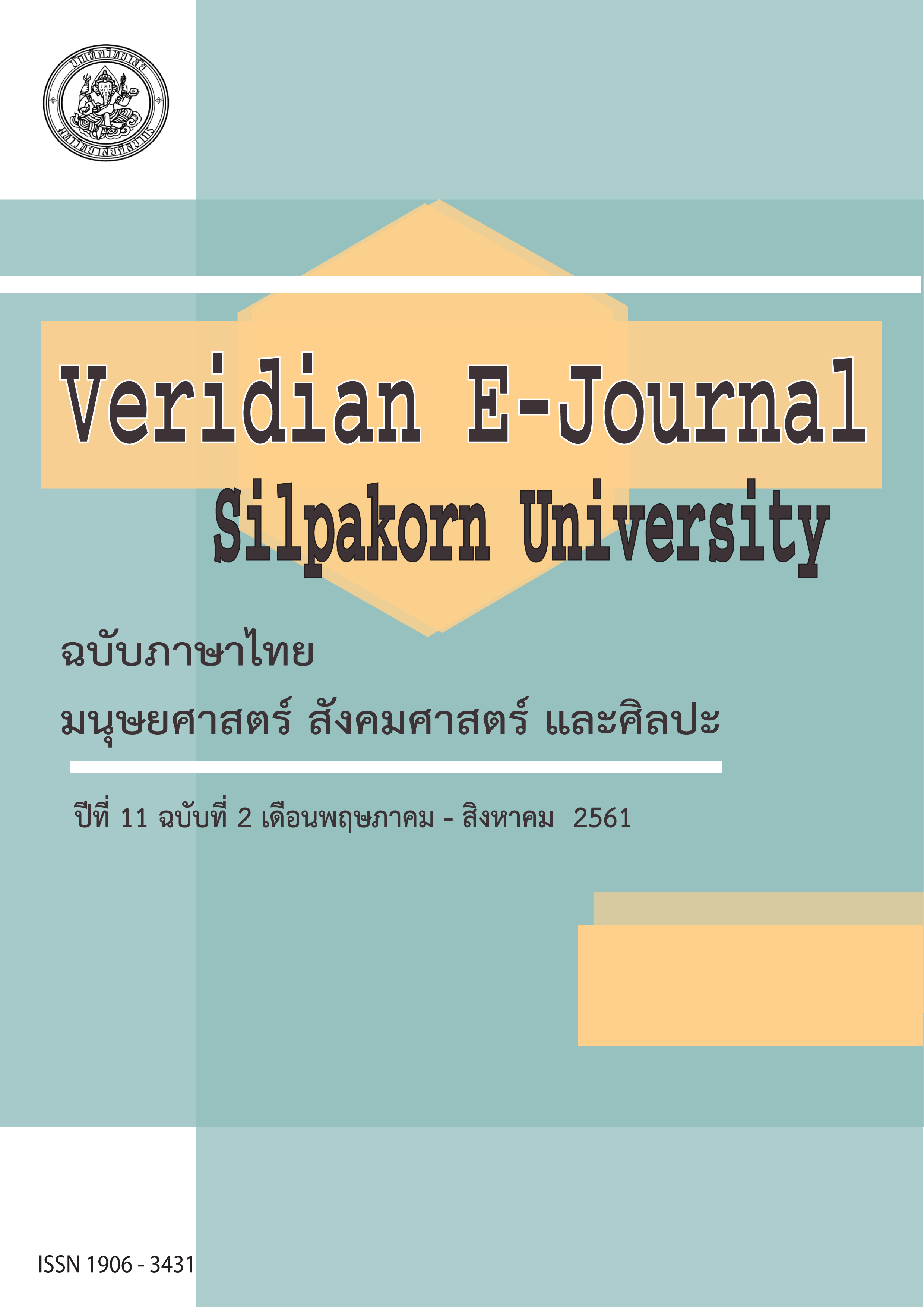ผลการใช้รูปแบบการจัดการเรียนรู้ การเรียนรู้และการเล่น ที่มีต่อความคิดสร้างสรรค์ทางวิทยาศาสตร์ เรื่องแรงและการเคลื่อนที่ ของนักเรียนระดับมัธยมศึกษาตอนต้น (The Effects of using a Learning and Playing Learning Model toward Lower Secondary Students’ Creative Thinking in Force and Motion topic)
Main Article Content
Abstract
การวิจัยในครั้งนี้มีวัตถุประสงค์เพื่อศึกษาความคิดสร้างสร้างสรรค์ จากการใช้รูปแบบการจัดการเรียนรู้ การเรียนรู้และการเล่น วิชาวิทยาศาสตร์ เรื่องแรงและการเคลื่อนที่ สำหรับนักเรียนชั้นมัธยมศึกษาตอนต้น ใน 4 องค์ประกอบของความคิดสร้างสรรค์ ได้แก่ ความคิดยืดหยุ่น ความคิดคล่องแคล่ว ความคิดริเริ่ม และความคิดละเอียดลออ กลุ่มตัวอย่างได้มาจากการสุ่มอย่างง่าย (simple random sampling) แบ่งออกเป็น 2 กลุ่ม คือ กลุ่มทดลองเป็นนักเรียนชั้นมัธยมศึกษาปีที่ 3 ที่เรียนด้วยรูปแบบการจัดการเรียนรู้ที่ผู้วิจัยพัฒนาขึ้น จำนวน 32 คน และ กลุ่มควบคุมที่เรียนตามปกติ จำนวน 34 คน เครื่องมือที่ใช้ในการวิจัยประกอบด้วย 1) แผนการจัดการเรียนรู้ เรื่องแรงและการเคลื่อนที่ จำนวน 7 แผน 2) แบบวัดความคิดสร้างสรรค์ แบบอัตนัย มีทั้งหมด 3 สถานการณ์ๆ รวมทั้งหมด 9 ข้อ สถิติที่ใช้ในการวิเคราะห์ข้อมูลครั้งนี้ ใช้ค่าเฉลี่ย (x) ส่วนเบี่ยงเบนมาตรฐาน (S.D) ทดสอบค่า t-test dependent และ t-test independent ผลการวิจัยพบว่า นักเรียนกลุ่มทดลองมีคะแนนเฉลี่ยความคิดสร้างสรรค์ในภาพรวม และรายด้าน หลังเรียนสูงกว่าก่อนเรียนอย่างมีนัยสำคัญทางสถิติที่ระดับ .05 และมีคะแนนเฉลี่ยด้านความคิดคล่องแคล่ว ด้านความคิดยืดหยุ่น ด้านความคิดริเริ่ม และด้านความคิดละเอียดลออ สูงกว่ากลุ่มควบคุมอย่างมีนัยสำคัญทางสถิติที่ระดับ .05 แต่คะแนนความคิดคล่องแคล่ว และความคิดยืดหยุ่น ค่อนข้างต่ำ และมีความคิดเห็นในภาพรวมที่ดีต่อรูปแบบการจัดการเรียนรู้ การเรียนรู้และการเล่นโดยเฉพาะสนุกเมื่อได้เล่นของเล่นในแต่ละคาบ และการใช้อุปกรณ์วิทยาศาสตร์ในการทดลอง
The purpose of this research was to examine the effectiveness of the learning and Playing learning model toward lower secondary students’ creative thinking in Force and Motion topic in four aspects; fluency, flexibility, originality and elaboration. Simple random sampling was used in collecting sample. The samples included two class rooms of Mathayomsuksa 3 students. A classroom with thirty two students was an experimental group and studied with the developed learning model, whereas the others group with thirty four students, was a control group that studied with traditional instruction. The research instruments were as follows: 1) seven force and motion lesson plans; 2) a creative thinking test with six items; The statistics in this research used the average value ( ), Standard Deviation (S.D), t-test dependent and t-test independent. The results indicated the following: the posttest score on creative thinking in the experimental group was higher than the control group at a .05 level of statistical significance, and their scores on fluency, flexibility, originality, and elaboration were higher than the control group at a level of .05 but the score of fluency and flexibility were lower than the criterion.
